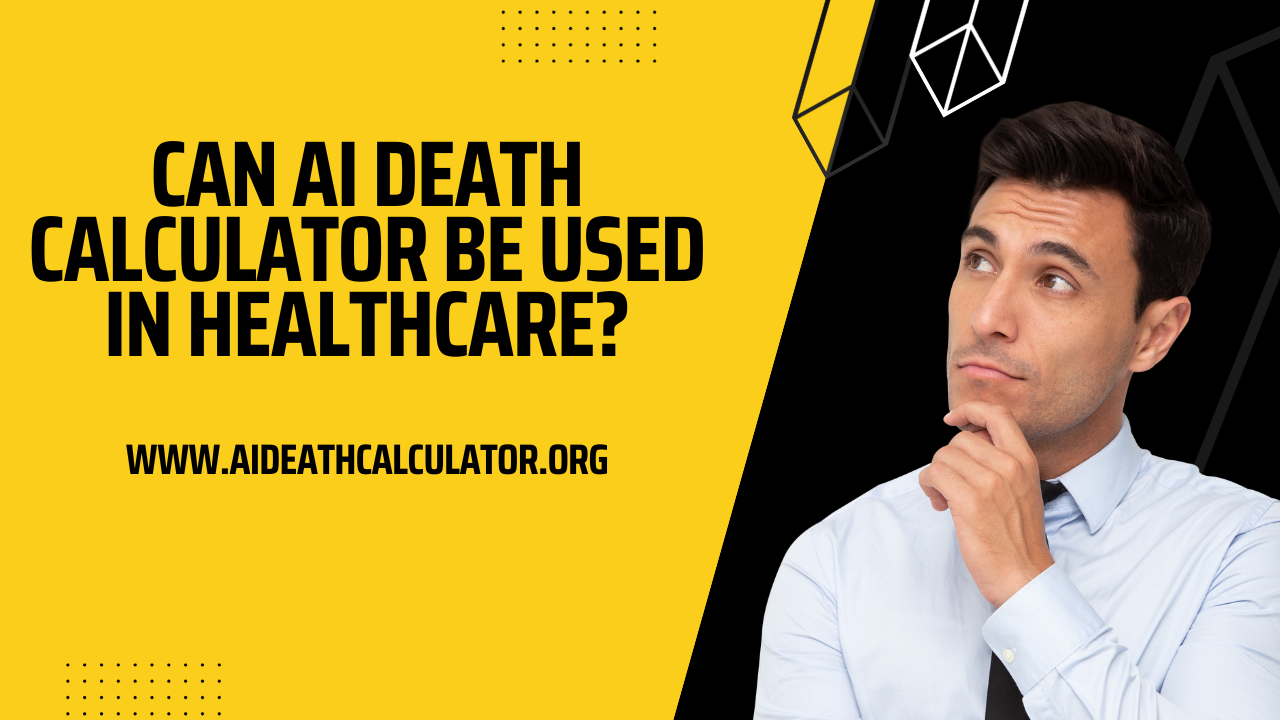Can AI Death Calculator be used in Healthcare? Artificial intelligence (AI) is transforming many industries, including healthcare. One emerging AI application is death calculators that use machine learning algorithms to predict an individual’s risk of dying within a certain timeframe, such as the next 5 or 10 years. These AI models take into account demographic, lifestyle, and health data to determine personalized mortality risks.
As AI capabilities advance, the accuracy of these predictions may improve to levels comparable to or exceeding traditional actuarial life tables. This raises important questions around the appropriate and ethical applications of AI death calculators in healthcare.
How AI Death Calculators Work?
AI death calculators are a form of prognostic machine learning model. They are trained on large, de-identified datasets from previous medical studies and health records. These datasets connect vital statistics, demographics, medical histories, and lifestyle behaviors with recorded deaths over defined follow-up periods. Using this training data, the algorithms detect statistical patterns linking inputs to mortality outcomes. Essentially, they recognize combinations of factors that historically precede deaths. The models can then take a new individual’s information and estimate their statistical likelihood of dying within set timeframes based on comparisons to the training examples.
Some benefits of AI risk calculators are that they can assimilate more input data signals than humans and can update their accuracy through re-training as new data emerges. However, they are limited by the quality of the training data. Biases or sample limitations in the data may reduce accuracy for underrepresented groups. Responsible AI practices around transparency, testing, and oversight are required to check for unfair biases and prevent unintended consequences.
Potential Benefits for Patient Health?
If proven acceptably accurate and unbiased, AI death calculators could provide some important benefits in healthcare contexts:
- Personalized risk insights: Calculators could use patient health records to provide data-driven risk estimates personalized to their profile versus generic actuarial tables. This could give patients and doctors a more accurate mortality outlook to inform health decisions.
- Optimizing preventative interventions: Understanding personalized risks could help better target limited healthcare resources towards preventative interventions for patients most in need. High-risk profiles could flag patients for screening programs, behavior changes, or treatments expected to yield significant risk/lifespan benefits.
- Motivating lifestyle changes: Patients seeing a higher predicted mortality risk tied to current behaviors like smoking may be motivated to make changes that then lead to improved longevity based on follow-up risk assessments. Visualizing positive impacts could be a feedback mechanism promoting healthy decision making.
- Research applications: De-identified datasets from AI mortality models could enable population-level healthcare research into policy decisions around resource allocation, community health initiatives targeting at-risk demographics, treatment efficacy studies and clinical trials, and more to statistically save more years of life.
Concerns and Limitations:
Despite some possible advantages, there are also many ethical hazards and technical limitations surrounding applying AI to predict life expectancy:
- Psychological harms: Telling patients they have a high risk score could incentivize nihilistic unhealthy behaviors (“I’m going to die soon anyway”) or significantly diminish quality-of-remaining-life by increasing anxiety, depression, and isolation. Evaluating such psychological impacts and mitigation strategies is critical.
- Algorithmic bias: Training data limitations could bake in biases leading to over- or under-estimates for minorities, low income groups, marginalized communities, and other populations. Such algorithmic biases could compound healthcare access inequities. Ongoing bias testing and mitigation techniques would be imperative.
- Uncertainty communication: There may be challenges clearly communicating confidence intervals and uncertainty ranges around AI predictions to patients and providers without technical backgrounds. If inaccuracies are not well-understood, inappropriate weight could be assigned to error-prone estimates.
- Resource misallocation: Targeting interventions only toward the highest risk groups identified by possibly imperfect models could overlook needs in lower-risk groups that interventions could still significantly help. An over-reliance on AI could misguide resource priorities without thoughtful human oversight accounting for additional societal factors.
- Loss of human agency: Over-emphasizing an external calculated risk score could wrongly imply patient health trajectories are pre-determined or diminish personal agency to improve outcomes through lifestyle changes. Healthcare messaging must balance risk insights with empowering self-efficacy.
Recommendations for Responsible Implementation:
Realizing benefits of AI death risk calculators while navigating ethical hazards will require deliberate policies and product design choices:
- Transparency requirements: Documentation detailing algorithm training data sources, feature selection, model evaluation schema, uncertainty quantifications, bias testing results, and other relevant implementation information should be shared publicly or with regulators to enable independent auditing.
- Professional oversight: Physicians should serve as gatekeepers for relaying risk estimates to patients only if the tool achieves satisfactory third-party validation. Ongoing professional evaluation can help catch deteriorating accuracy or unfair model behaviors for correction.
- Patient-centric design: User interfaces and explanatory materials should account for diverse backgrounds, clearly state limitations, and frame risks with empathy and in empowering action-focused style to minimize potential psychological harms.
- Inclusive development: Representatives from more marginalized communities experiencing well-documented healthcare disparities should participate throughout the tool building and testing process to catch design oversights.
- Narrow, evidence-based use cases: Rigorously validated models should target only clear use cases demonstrating efficacious impacts on care outcomes over years of trials prior to any expansion to more patient experiences. Continued impacts should be monitored post-deployment to ensure benefits outweigh costs.
Conclusions:
In summary, while AI death risk calculators offer possibilities to optimize preventative interventions and motivate patient lifestyle changes, their limitations around accuracy, uncertainty, algorithmic bias, responsible communication, and ethical hazards cannot be ignored.
Achieving positive outcomes from these technologies without worsening existing healthcare inequities will require extensive validation testing, professionally-guided implementations, inclusive oversight infrastructure, and narrowly circumscribing use cases unless societies wish to sleepwalk into dystopian applications of machine-predicted life expectancy.
Technological capabilities alone do not define appropriate usage – realizing upside while mitigating downside risks of emerging AI will demand deliberate, evidence-based policymaking centered on humanistic values.

1 thought on “Can AI Death Calculator be used in Healthcare?”